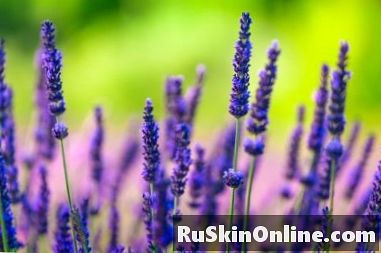
Content
- Real lavender - triumph of an aromatic herb
- Botanical profile
- Home and spread
- Special varieties
- Ingredients and taste
- Historical use
- Tips & Tricks

Real lavender - triumph of an aromatic herb
Lavender (Lavandula angustifolia), also popularly known as Great or True Speik, Pointed Spoon or Spieke, is especially prized for its aromatic fragrance and pretty flowers. However, the plant can also be used to flavor many dishes (eg lamb) or as a fragrant bath additive.
Botanical profile
The lavender belongs to the mint family (Lamiaceae). His taproot reaches deep into the ground. The plant forms a branched half shrub of 30 to 60 centimeters high, whose older branches lignify. The young shoots, however, are gray-green in color and square. Lavender has oblong, narrow, needles-like leaves of silvery gray color. This leaf color is an indication of the Mediterranean origin of lavender, because it serves as a sunscreen - similar to the equally silvery colored leaves of the olive tree. On long stems appear from July to September, the fragrant blue or purple flower spikes.
Home and spread
The lavender comes from the southern European Mediterranean countries, where it grows wild on rocky and dry slopes. Benedictine monks once brought the herb over the Alps, today it is native as a fragrance and medicinal plant in numerous gardens in Western and Northern Europe. The land of lavender is especially famous in the French Provence, where every year at the height of its flowering a blue and purple carpet of flowers covers the landscape.
Special varieties
The real lavender is available in different varieties and colors:
Ingredients and taste
Above all, the plant contains plenty of essential oils. In addition there are tannins and bitter substances, flavonoids, coumarins and rosmarinic acid. Lavender has a calming, cramping and nerve-strengthening effect. The fragrance herb has a well-known fresh-spicy fragrance. It tastes a bit bitter-bitter, similar to rosemary. Young leaf shoots are suitable as a special spice to fish, poultry, stew, mutton, soups and sauces.
Historical use
Although lavender is native to Mediterranean countries, it has not played any special medical role in antiquity. Its name is derived from the Latin word for "wash", "lavare", as the clean Romans flavored their bath water with this herb. Only on the other side of the Alps did lavender reach its fame, where it became a highly valued herb in various monastery and cottage gardens. In recent centuries, lavender has been considered a form of protection against infectious diseases, such as its scent, which kept disease-transmitting lice away.
Tips & Tricks
Since ancient times dried lavender bouquets are placed in the linen closet. They not only spread their fragrance there, they also drive away the moths.
IJA